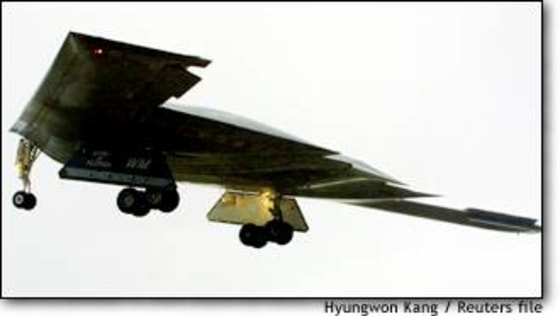The jagged-triangle shape of the B-2 Spirit long-range bomber is now a familiar part of the opening moments of warfare. The unusual shape of the aircraft, part of its “stealth” design, allows it to minimize its appearance to enemy radar, making the B-2 an American commander’s choice when it comes to taking out key anti-aircraft radars or other targets as the fighting begins.
Most modern long-ranged bombers are designed to fly very low to evade enemy radar detection. But the idea behind the four-engine that is that its stealth features allow it to operate at high altitude and still be nearly invisible to defense systems.
That makes it likely that the B-2 will fire the first shot of any war in Iraq, according to military analyst Bruce Unger of Randolph Macon College. Together with F-117s, the so-called “stealth fighters,” the B-2s will be used for night-time attacks over Iraqi command and control centers and communications and radar facilities.
B-2s, which debuted during the Kosovo war of 1999, also have the distinction of having been the first aircraft to carry JDAMS, a special kit added to “dumb” bombs to allow them to be guided via satellite into their targets with enormous accuracy. The B-2s can carry nearly 20 tons of these deadly accurate bombs.
At an estimated cost of $2.2 billion a piece, the B-2 Spirit is the world’s most expensive aircraft. It also comes with enormous overhead: the plane’s delicate stealth coating needs repair after each mission. They also need special climate controlled hangers whenever deployed abroad, as they are now on the Indian Ocean island of Diego Garcia.
Partly for that reason, the B-2s in the past have flown primarily out of bases in the United States. Three pair took part in the first three days of attacks on Afghanistan, flying from their home at Whiteman Air Force Base, Missouri, refueling in flight several times on the way.
With a subsonic top speed, each mission lasted more than 40 hours. One, at 44 hours, is said to have been the longest combat sortie in aviation history. To accomplish this, the aircraft’s two pilots took turns napping between shifts.
